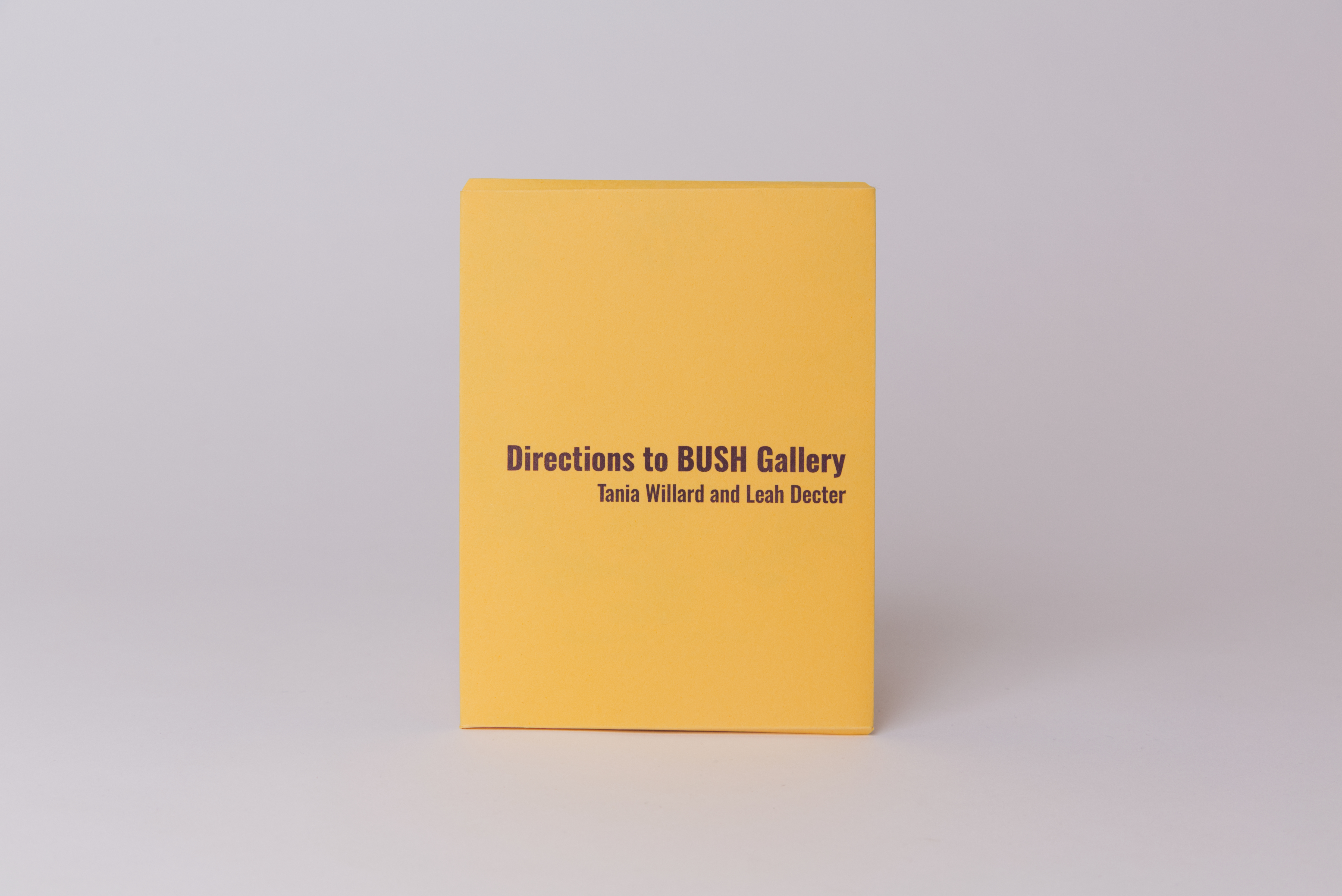collaboration with Tania Willard
2024
Artist Book: Light Factory Publication’s Reading the Migration Library Undercurrents and Folds series.
Host Artists (series editors): Lois Klassen and Deanna Achong
Full credits and further info here



From the Undercurrents and Folds/Light Factry Publications website:
“A collaboration between artists Tanie Willard (mixed Secwépemc and settler) and Leah Decter (Ashkenazi Jewish white settler), this “fortune teller” game will test players’ knowledge of land claim events in western Canada, and will ultimately lead the fortune-seeker to “LAND BACK”. A spiral text on the inside of the fortune teller offers poetic “directions” for respectful travel across the lands now called Canada in light of Indigenous sovereignty, colonial occupation and broken promises over land. Look inside the envelope to see an image of wildflowers that remind us how the flowering of the land is also a map leading us somewhere.”
A version on this text was originally published in C Magazine, Issue 150: Maps. (Toronto: C The Visual Arts Foundation 2022).
Excerpt from the C Magazine version (Tania WIllard and Leah Decter)
This is part of a larger creative discussion we are engaged in about hosting through art on sovereign Secwépemc territory (#BUSHGallery) from Tania’s Secwépemc (and settler) perspective and guesting responsibly on unceded Indigenous lands from Leah’s critical white settler perspective.
Giving directions is one of the first steps when inviting someone to visit. It is a hosting obligation. Following these directions is a guesting obligation. Directions to BUSH Gallery takes into account that there are so many more directions than those guiding a visitor geographically to a place. With this in mind, they depart from geographical instructions - turn left here… drive until you reach such and such a landmark etc. – by directing the (settler) visitor to reflect on moving through the territories of distinct Indigenous Nations, Indian Reserves and ultimately entering the land as a visitor. In doing this they indicate a political and conceptual journey so that people, when visiting, do not miss what is important about Indigenous rights and do not take mobility on Indigenous lands for granted. These directions draw on divergent experiences of shared histories and signal the exchange of guest-host relations; welcoming and asserting hospitality, sovereignty, relationality and inclusivity, and visiting consciously and respectfully. While highlighting hosting as a form of relational welcoming, these directions do not let the settler visitor off the hook, instead appealing for an engaged and accountable form of guesting, one that is undertaken with humility.
This publication would not have been possible without funding and support from BC Arts Council (Individual Arts Award); Canada Council for the Arts (Research Creation, Explore and Create grant); SSHRC Postdoctoral Fellowship at Critical Media Art Studio, School of Interactive Art and Technology, SFU; Centre for Inter-Media Arts and Decolonial Expression (CIMADE), the Canada Research Chairs Program; SITE/ation Studio, UBCO, Canada’s Social Sciences and Humanities Research Council and Manitoba Arts Council.
︎ ︎